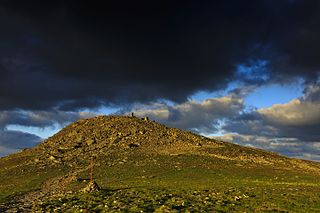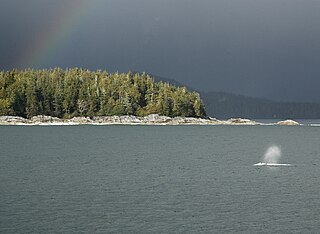
A nature reserve is a protected area of importance for flora, fauna, funga, or features of geological or other special interest, which is reserved and managed for purposes of conservation and to provide special opportunities for study or research. They may be designated by government institutions in some countries, or by private landowners, such as charities and research institutions. Nature reserves fall into different IUCN categories depending on the level of protection afforded by local laws. Normally it is more strictly protected than a nature park. Various jurisdictions may use other terminology, such as ecological protection area or private protected area in legislation and in official titles of the reserves.
UNESCO Biosphere Reserves are environment-protected scientific-research institutions of international status that are created with the intent for conservation in a natural state the most typical natural complexes of biosphere, conducting background ecological monitoring, studying of the surrounding natural environment, its changes under the activity of anthropogenic factors.

A transboundary protected area (TBPA) is an ecological protected area that spans boundaries of more than one country or sub-national entity. Such areas are also known as transfrontier conservation areas (TFCAs) or peace parks.
This is a list of protected areas of Romania.

Mamungari Conservation Park is a protected area located in South Australia within the southern Great Victoria Desert and northern Nullarbor Plain about 200 kilometres west of Maralinga and 450 kilometres northwest of Ceduna. It is about 1,000 kilometres (620 mi) north-west of Adelaide and abuts the Western Australia border

The Western Caucasus is a western region of the North Caucasus in Southern Russia, extending from the Black Sea to Mount Elbrus.

Babia Góra National Park is one of the 23 national parks in Poland, located in the southern part of the country, in Lesser Poland Voivodeship, on the border with Slovakia. Its headquarters are located in Zawoja. A Nature Reserve which roughly covered the area of the modern-day national park was created in 1933, with the actual park established on October 30, 1954. Since 1976, it has been designated by UNESCO as a biosphere reserve.

Kavir National Park is a protected ecological zone in northern Iran. It has an area of 4,000 square kilometers. The park is located 120 kilometers south of Tehran and 100 kilometers east of Qom, and it sits on the western end of the Dasht-e Kavir.
India is home to a large variety of wildlife. It is a biodiversity hotspot with various ecosystems ranging from the Himalayas in the north to the evergreen rainforests in the south, the sands of the west to the marshy mangroves of the east. India lies within the Indomalayan realm and is home to about 7.6% of mammal, 14.7% of amphibian, 6% of bird, 6.2% of reptilian, and 6.2% of flowering plant species. India's forests contain about 500 species of mammals and more than 1300 bird species.

Miyānkāle peninsula is a long, narrow peninsula in Behshahr County of Māzandarān Province in the north of Iran situated in the extreme south-eastern part of the Caspian Sea. The elongate peninsula is 48 kilometres long, and between 1.3 and 3.2 kilometres wide.

Salar de Surire Natural Monument is a Chilean Natural Monument located in the Andes, in the Arica y Parinacota Region. It consists mainly of a salt flat and a number of small salt lakes, sheltering several Andean species of wildlife and plants. Arintica volcano towers over the salt flat.
Under UNESCO’s Man and the Biosphere Programme, there are 308 biosphere reserves recognized as part of the World Network of Biosphere Reserves in Europe and North America. These are distributed across 41 countries in the region.

Lago Peñuelas National Reserve is a national reserve of Chile. The reserve was created around Peñuelas Lake, a freshwater reservoir that provides drinking water to Valparaíso and Viña del Mar. The park, which is located in the Valparaíso Region of Chile, was declared a protected area in the year 1952 in order to protect the drainage of the Peñuelas reservoir and dam, built at the end of the 19th and beginning of the Twentieth century. The park, along with La Campana National Park to its north, was designated Campana-Peñuelas Biosphere Reserve by UNESCO in 1984.
Khar Turan National Park and Touran Wildlife Refuge are adjoining protected areas in Iran. They are situated in the Semnan province, southeast of Shahrud. With a size of 1,400,000 hectares (14,000 km2), They form the second-largest reserve in Iran. Khar Turan National Park also called the little Africa in Iran, is registered as the second biosphere reserve in the world by UNESCO, Turan National Park and Wildlife Refuge is one of the astonishing expanses to observe the mysteries of the wildlife accustomed to arid and semi-arid regions of Iran. Being the second-largest reserve in this country, this park embraces arid highlands, lowlands, mounts, sands, and endless salt pans.
The Geno Biosphere Reserve, with a total area of 27,500 hectares, situated in the Hormozgan province of Iran. It has been designated as a protected area by the Iranian Department of Environment in 1976.
Biosphere reserves are established according to the UNESCO's Man and the Biosphere Programme (MAB) to promote sustainable development for conservation of biological and cultural diversity. As of 2016, the Lal Suhanra Biosphere Reserve and Ziarat Juniper Forest are the only two biosphere reserve in Pakistan, which were approved by UNESCO in 1977 and 2013 respectively. A number of initiatives and projects have been undertaken to promote and develop other biosphere reserves in Pakistan but due to weak implementation this has not yet been materialized. In July 2012, Pakistan Museum of Natural History and Beijing Museum of Natural History signed a MoU to work on trans-boundary biodiversity and to improve MAB related activities in the Karakoram, Himalaya, and Hindukush regions.

Clayoquot Sound Biosphere Reserve is a UNESCO Biosphere Reserve situated in Clayoquot Sound on the west coast of Vancouver Island in British Columbia, Canada. A diverse range of ecosystems exist within the biosphere reserve boundaries, including temperate coastal rainforest, ocean and rocky coastal shores.

The West Polesie Transboundary Biosphere Reserve is a transboundary nature reserve located in Poland, Ukraine, and Belarus. It is designated as an area of global importance under UNESCO's World Network of Biosphere Reserves under their Programme on Man and the Biosphere.











